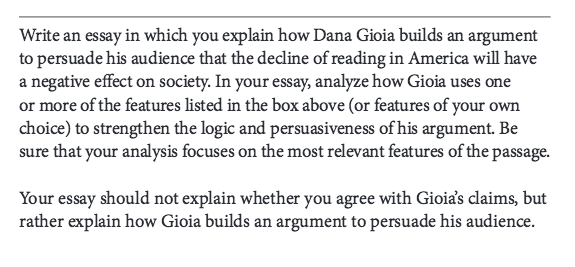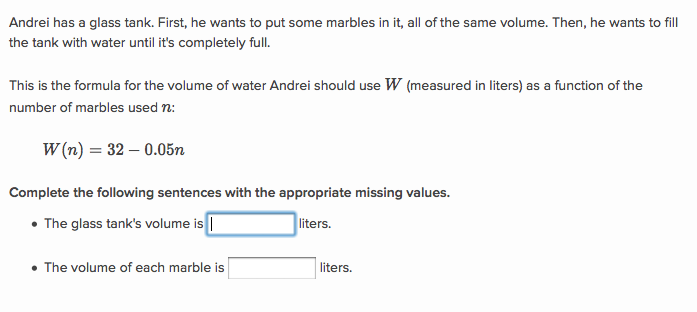
Have you heard about the Common Core? Are you asking, "what is the Common Core, exactly?" Don't worry. This post will explain what the Common Core is, why it was adopted, and how it could affect you as a student.
Why should you care? The Common Core has driven some pretty major changes to big-name standardized tests like the SAT and ACT, as well as curriculum changes within schools. So read on to discover what you’re being tested on and why!
Common Core 101
In this section, I'll explain what the Common Core is, why it was implemented, and what some common opinions about it are. Later, I'll discuss how the Common Core could affect your high school classes and standardized testing.
Why Does Common Core Exist? Who Uses It?
The Common Core is a set of educational standards for American schools, from kindergarten through 12th grade. It was designed so that education is consistent between each state and district.
The first official adoptions of the Common Core were back in 2010, which means it has only been implemented during the 2013-14 school year and beyond. Since it has only been used the past two years, it’s hard to say how effective it’s been so far. It will take a few more years of Common Core before we have a decent sense of how useful it's been.
It’s currently been adopted or partially adopted by 40 states. Four states never adopted the standards, and six initially adopted them but later repealed the standards.

Or to put it another way, every state except Alaska, Indiana, Michigan, Missouri, Nebraska, New Jersey, Oklahoma, South Carolina, Texas and Virginia has adopted the standards. (Minnesota has adopted the English standards but not the Math ones).
In the 44 states that have adopted the standards, school districts still design their own curriculums, and teachers create their own methods for instruction. In other words, the Common Core is not a day-by-day curriculum teachers have to follow – instead, it’s easiest to think of it as a series of basic benchmarks for each grade.
So what exactly are these benchmarks?
What do the Common Core Standards Do, Exactly?
The Common Core sets specific learning goals for students in each grade from Kindergarten through 12th grade in two subjects: Math and English.
Broadly speaking, the standards emphasize critical thinking and real-world problem-solving skills as opposed to rote memorization, reading obscure texts, and packing in tons of math concepts each year.
The English standards rely on a mix of literary, historical, and informational texts – everything from Huck Finn to the Declaration of Independence to scientific articles. The Math standards focus on problem-solving and modeling as opposed to just moving through dozens of math concepts. You can expect to see more complex problems, including story problems, in math classes that are following the Common Core.
We'll dig into the high school Common Core standards in depth later in this post.
The Pros and Cons of Common Core
There has been a lot of debate over the Common Core since it was first adopted by many states in 2010. We’ll leave it up to you to decide if the Common Core is a good thing or not, but these are the basic arguments for and against the standards.
Supporters of the Common Core say the standards will better prepare students for college and their careers. By focusing on having students explain their thinking and come up with new ways to solve problems, they hope to help students be better college students and more effective workers.
One high-profile supporter is current US Secretary of Education Arne Duncan, who said Common Core may be "the single greatest thing to happen to public education in America since Brown versus Board of Education."
 Current US Secretary of Education Arne Duncan is a big fan of the Common Core.
Current US Secretary of Education Arne Duncan is a big fan of the Common Core.
Critics say the standards are vague and might not be easy for many schools to adopt. Some believe they won’t lead to a marked improvement in school performance, especially since they come with harder state testing. Others are worried that the standards weren’t tested before they were adopted, so there is no way to know how’ll useful they’ll be.
If you want to read more, one of the most thorough arguments against Common Core comes from Diane Ravitch, an education historian and former U.S. Assistant Secretary of Education.
How Common Core Could Affect Your High School Classes
Common Core was designed specifically for Math and English, so those are the classes where you can expect to see the biggest changes as a high school student. While your social studies, history, and science classes may incorporate some Common Core-like elements (more open-ended questions, problem solving, and real-world applications), it’s likely that your Math and English teachers will be responsible for the biggest curriculum changes.
This article focuses on the high school Common Core standards, so if you want to see a guide to the Common Core at all grade levels, K-8, check out this guide put out by the national PTA.
Common Core Math
Experts have mostly agreed that in the past, American math classes have tried to cover too much ground each year. This means students know a little bit about many topics, but don’t have a solid understanding of the main ideas that would help them in more advanced math classes.
In response to this issue, the Common Core math standards tackle fewer topics in more depth. The goal is for students' math fluency (their ability to perform basic math functions and work through problems) to be strengthened.
You'll still spend time memorizing and practicing formulas and working through math problems, like you're probably used to doing in math class. But you’ll also do a lot of modeling to understand concepts you're learning about. For example, instead of just learning that y = mx + b is a linear equation and drawing it on a graph, you might model a linear equation with a real world situation, like in this example problem from Khan Academy:
The problem still requires students to know the basic y = mx + b formula and what it means. But it goes a step further by requiring students to apply that formula to a real-world situation.
You can see another example of how Common Core standards aim to promote more critical thinking below, courtesy of Foundation for Excellence in Education:

For the problem on the left, you could just tackle it by manipulating the equation until y is alone. As the analysis notes, if you can follow a series of mechanical steps, you can get the right answer.
For the problem on the right, not only do you need to find out what y is, but you also need to make your own equations, which requires you to have a stronger conceptual understanding of what equations are and how to write them.
Basically, Common Core is trying to create a balance between math fluency (working through problems, memorizing formulas) and the ability to solve tougher problems using critical thinking skills.
The Common Core High School Math Standards
This is a basic summary of what the Common Core math standards will look in high school. Notice that these aren’t incredibly detailed, and focus on developing key skills in each area. They're less focused on moving through the traditional math sequence and getting through a bunch of concepts (Beginning Algebra, Geometry, Intermediate Algebra, Trigonometry, etc).
Also notice these standards only go up through Statistics, so if you’re an advanced student aiming for calculus, these standards might not apply to you in your upper-level courses.
|
Concept |
Description |
Example |
|
Number and Quantity |
Work with rational and irrational numbers, including exponents, solve problems with a wide range of units and solve problems by thinking about units. |
The Trans Alaska Pipeline System is 800 miles long and cost $8 billion to build. Divide one of these numbers by the other. What is the meaning of the answer? |
|
Algebra |
Solve real-world and mathematical problems by writing and solving nonlinear equations, such as quadratic equations, interpret and manipulate algebraic expressions to solve problems. |
Solve a problem about a loan with interest rate r and principal P by seeing the expression P(1+r)n as a product of P with a factor not depending on P. |
|
Functions |
Analyze functions algebraically and graphically, and work with functions presented in different forms. |
Given a graph of one quadratic function and an algebraic expression for another, say which has the larger maximum, working with function families and understanding their behavior (such as linear, quadratic, and exponential functions). |
|
Modeling |
Analyze real-world situations using mathematics to understand the situation better and optimize, troubleshoot, or make an informed decision about a problem or issue. |
Use volume formulas and graphs to find an optimal size for an industrial package. |
|
Geometry |
Prove theorems about triangles and other figures; use coordinates and equations to describe geometric properties algebraically. |
Prove that the angles in a triangle add to 180 degrees; write the equation for a circle in the coordinate plane with a specified center and radius. |
|
Statistics and Probability |
Make inferences and justify conclusions from sample surveys, experiments, and observational studies. Work with probability and use ideas from probability in everyday situations. |
Compare the chance that a person who smokes will develop lung cancer as compared to the chance that a person who develops lung cancer smokes. |
Via Parents' Guide to Student Success, from the National PTA.
Common Core English (Language Arts)
The old English (or Language Arts) standards, especially at the high school level, tended to focus mostly on reading and analyzing literature. The new Common Core English standards include a shift to more nonfiction and informational texts, as well as a push for more class discussions and writing that are focused on evidence from the readings (as opposed to the prior experiences or ideas of the students or teacher).
Specifically, in elementary school, according to the Common Core, students should be reading a mix of 50 percent literature and 50 percent informational texts. By high school, students’ reading will shift to be 30 percent literary and 70 percent informational.
 The Common Core also pushes for students to study important foundational documents of the United States, including the Declaration of Independence.
The Common Core also pushes for students to study important foundational documents of the United States, including the Declaration of Independence.
The new standards also push students to read harder texts that are matched to their grade level, even if their reading ability is below grade level. In the past, teachers were encouraged to match readings to the students’ current level of skill.
To help them keep up, teachers should use techniques like close reading, and not be afraid to spend more than one class period on just one text. Also, instead of asking more general questions about a text, the Common Core encourages teachers to ask more specific questions about details in the text and what you can infer from them.
All of this is to help students read and understand complex texts from a variety of subjects, and to prepare them to write strong essays, reports, and presentations.
This table has a basic summary of the Common Core English standards for high school students. Just like the math standards, they're mostly skills-based (e.g., be able to "evaluate arguments and specific claims") as opposed to content-based (e.g., "read Shakespeare's Romeo and Juliet").
| Concept | Goal |
| Reading |
Understand more from and make fuller use of written materials, use a wider range of evidence to support an analysis, make more connections about how complex ideas interact and develop within a book, essay, or article. |
| Reading |
Evaluate arguments and specific claims, assess whether the reasoning is valid and the evidence is sufficient, and as appropriate, detect inconsistencies and ambiguities. |
| Reading |
Analyze the meaning of foundational U.S. documents (like the Declaration of Independence, the Preamble to the Constitution). |
| Writing |
Make an argument that is logical, well-reasoned, and supported by evidence. |
| Writing |
Write a literary analysis, report, or summary that develops a central idea and a coherent focus and is well supported with relevant examples, facts, and details. |
| Writing |
Conduct several research projects that address different aspects of the same topic, using more complex books, articles, and other sources. |
| Speaking and Listening |
Respond thoughtfully to diverse perspectives; synthesize comments, claims, and evidence made on all sides of an issue; and resolve contradictions when possible. |
| Speaking and Listening | Share research, findings, and evidence clearly and concisely. |
| Speaking and Listening |
Make strategic use of digital media (e.g., animations, video, websites, podcasts) to enhance understanding of findings and to add interest. |
| Language |
Determine or clarify the meaning of words and phrases, choose flexibly from multiple strategies, such as using context, Greek and Latin roots, patterns of words (conceive, conception, conceivable), and consult specialized reference materials. |
| Language |
Analyze figures of speech (e.g., hyperbole, paradox) in context and analyze their role in the written materials. |
Via Parents' Guide to Student Success, from the National PTA.
How Common Core Affects Standardized Testing
The Common Core will have a pretty sizeable effect on standardized testing – from college admissions tests to in-school exams – in the next few years. This may be the area you see the most noticeable changes in your high school experience, so read closely!
First off, it’s important to know that the SAT and ACT were both involved with the creation of the Common Core standards. And in fact, the current head of College Board (the company that makes the SAT) helped write the Common Core. He was on the Language Arts committee.
As Diane Ravitch notes in the Washington Post, “With David Coleman in charge of the College Board, the SAT will be aligned with the Common Core; so will the ACT. Both testing organizations were well represented in the writing of the standards; representatives of these two organizations comprised 12 of the 27 members of the original writing committee.”
So it’s not a surprise that the SAT’s 2016 redesign is in large part to fit in with the Common Core Standards. To take just one example, let’s look at how the SAT essay is changing. This is an example of an old SAT essay topic:

And here is an example of a new one:

(The prompt also includes an essay, which we won't make you read!)
 Via Test Specifications for the New SAT, pages 131-3.
Via Test Specifications for the New SAT, pages 131-3.
Notice the old essay question allowed students to draw from personal experience and examples. The new essay is all about working with evidence to make an argument – just like the English standards specify above. (We'll be outlining even more changes in an upcoming post just about SAT and the Common Core.)
The ACT’s new features, like the new essay and more complex science questions, also speak to the Common Core standards, even though the ACT changes are less dramatic. In addition, ACT Inc.’s new Aspire testing aligns to Common Core goals.
But the changes don’t stop with the SAT and ACT. Recent AP redesigns of Physics and US History have the goal of making the classes more skills-based and involving more critical thinking. Plus, Smarter Balanced, PARCC, and other new state-wide tests have been created to assess students with the new standards in mind.
"To get at what's really fundamental in the Common Core, the higher-order thinking skills, we need performance-based tasks," said Derek Briggs, who advised both Smarter Balanced and PARCC (as quoted in US News). Thus, new tests had to be designed.
These new tests could make standardized testing take even longer since the performance-based tasks take up much more time than your typical scantron-and-pencil multiple choice test.
What Should You Do if Your State is Using Common Core?
Even though the Common Core changes might seem intense, the good news is that, as a student, there isn't a lot you have to do to prepare for the new curriculum. Read on for advice on handling Common Core both in the classroom and on college admissions tests.
Common Core in School
If you’re a student, you don’t need to stress about the changes at the classroom level – your teachers will be the ones integrating the Common Core into their curriculums based on how your school district is adopting the standards.
It would be worth talking to your teachers about how Common Core has affected their curriculums, if at all. Math and English teachers are likely to see the biggest changes. If your school is using Common Core, you can keep the standards in mind and work to use more evidence in English class and use real-world examples in math. But again, your teachers are responsible for implementing the changes to their curriculums and you should follow their lead.
There is one important point to check up on: check in with your guidance counselor to make sure the sequence of math classes at your high school isn’t changing. If you want to take Calculus by the end of high school, you should aim to have completed Algebra before freshman year. Since the Common Core standards don’t explicitly list Algebra until ninth grade (even though Algebra concepts are included in the middle school standards), some worry that Algebra classes will be bumped to ninth grade, putting students behind.
Common Core on Standardized Tests
We will have more detailed posts coming up on Common Core specifically on the SAT and ACT. But if you're worried about how the Common Core will change the ACT and SAT and affect how you study for either test, keep the following advice in mind.
For the SAT, instead of worrying about how Common Core is changing the test, learn as much as you can about the new SAT and also check out our complete guide to studying for it.
On the ACT, the changes are subtler, so you’ll mainly have to worry about being ready for the new essay, as well as the harder reading and science questions. As always, we recommend taking plenty of full-length practice tests to prepare for the test.
If your school is implementing Smarter Balanced, PARCC, or ACT Aspire, don’t stress over them, since your performance on those tests doesn’t affect your grades or college prospects. It will be your teacher’s job to prepare you for in-school assessments.
What’s Next?
If you’re part of the graduating class of 2017, you could take either the “old” or “new” SAT. Learn how to decide between the old and new SAT – and whether you should consider just taking the ACT instead!
Have you already decided to take the ACT? Learn if the ACT is getting harder, and get a complete guide to ACT Science.
Chosen the SAT instead? Get a complete guide to SAT Reading if you're taking the "old" SAT, or read more in-depth about the new SAT if you'll be taking it.












